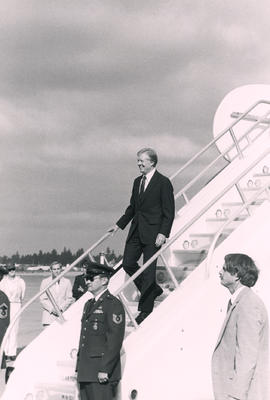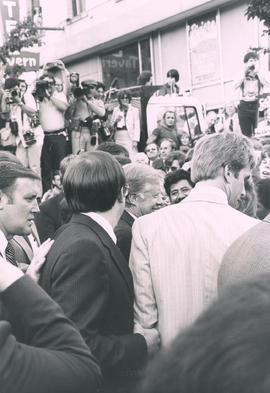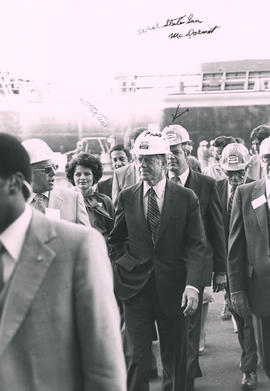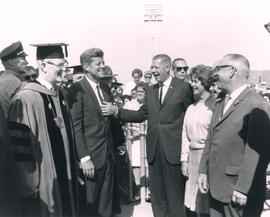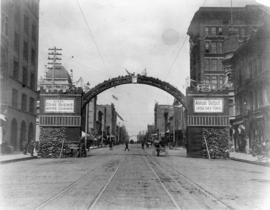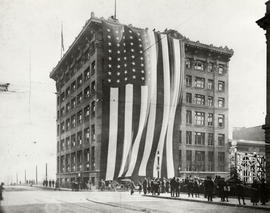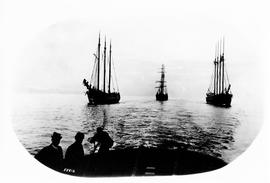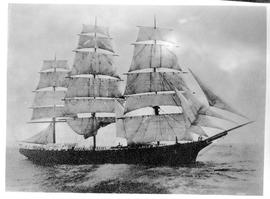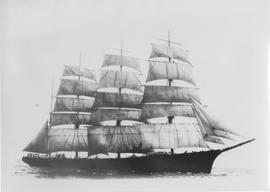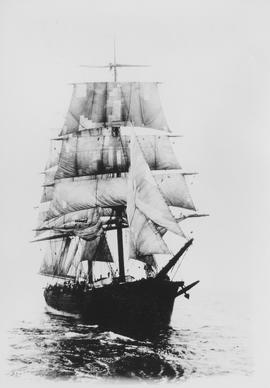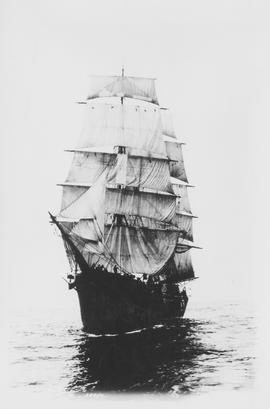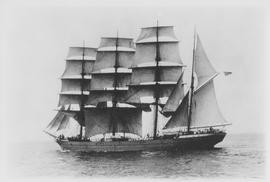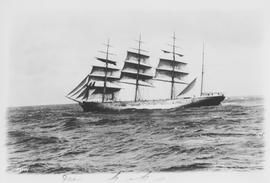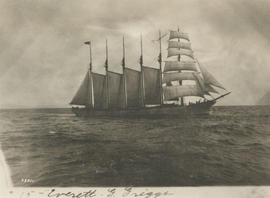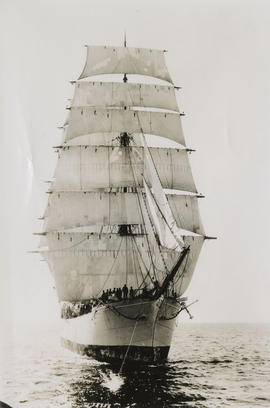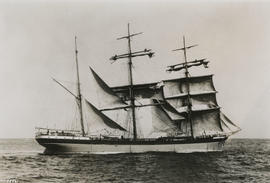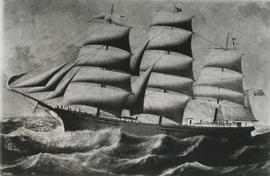- Item
- 1980-09-23
Part of General Photograph Collection
A smiling President Jimmy Carter descends from the presidential aircraft, Air Force One, on September 23, 1980. He was making a brief stop in Tacoma as part of his re-election campaign and also to stump for other Democratic candidates including Senator Warren Magnuson and State Senator Jim McDermott who had defeated incumbent Dixy Lee Ray in the primaries. Military officers flank the plane's stairs while the man on the extreme right, a Secret Service agent, keeps his eye on the gathering crowd.
Carter, Jimmy; Presidents--United States; Visits of state--Tacoma--1980-1990; Presidential aircraft; Political campaigns; Presidential elections;
